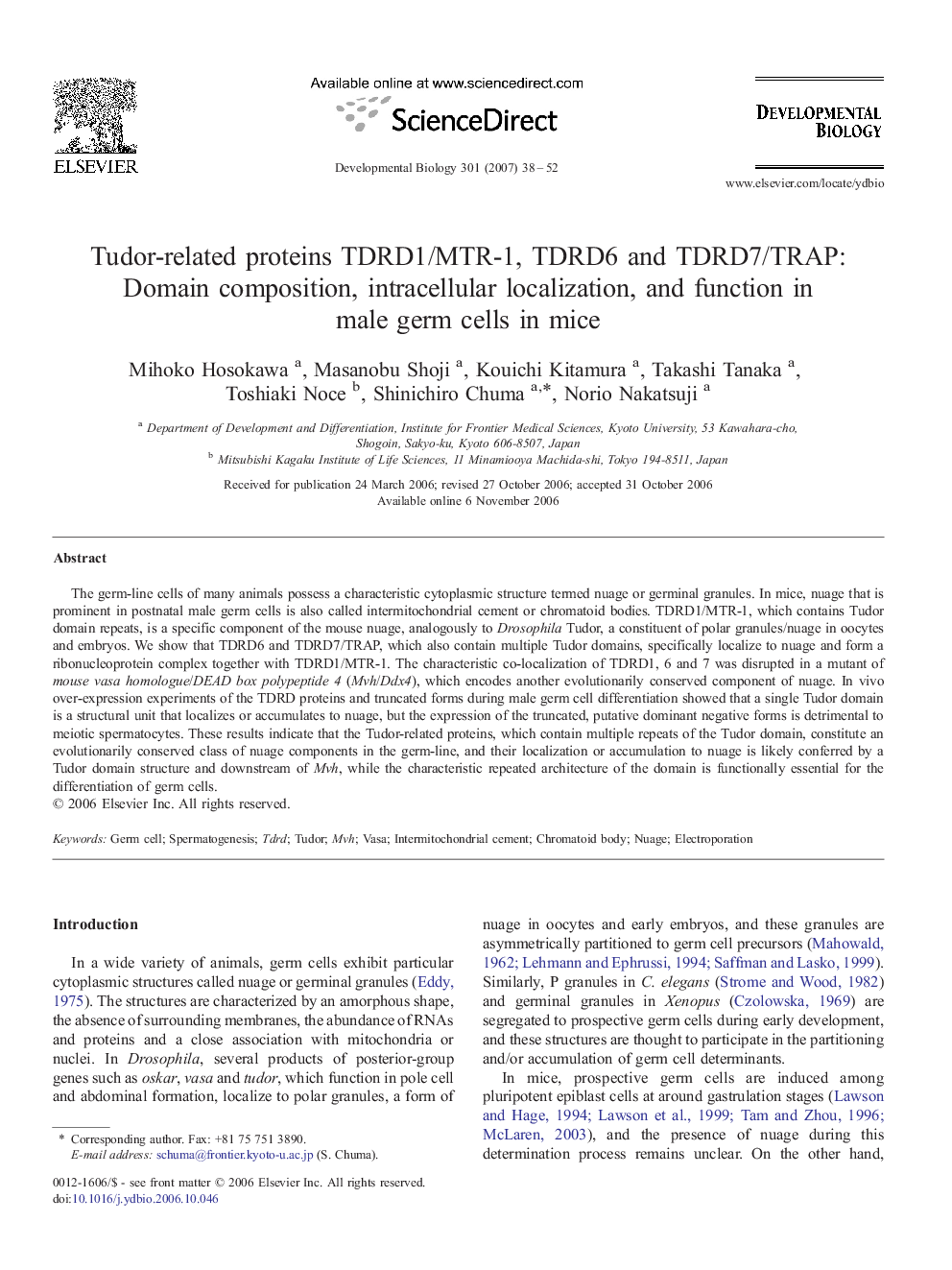| Article ID | Journal | Published Year | Pages | File Type |
|---|---|---|---|---|
| 2175528 | Developmental Biology | 2007 | 15 Pages |
The germ-line cells of many animals possess a characteristic cytoplasmic structure termed nuage or germinal granules. In mice, nuage that is prominent in postnatal male germ cells is also called intermitochondrial cement or chromatoid bodies. TDRD1/MTR-1, which contains Tudor domain repeats, is a specific component of the mouse nuage, analogously to Drosophila Tudor, a constituent of polar granules/nuage in oocytes and embryos. We show that TDRD6 and TDRD7/TRAP, which also contain multiple Tudor domains, specifically localize to nuage and form a ribonucleoprotein complex together with TDRD1/MTR-1. The characteristic co-localization of TDRD1, 6 and 7 was disrupted in a mutant of mouse vasa homologue/DEAD box polypeptide 4 (Mvh/Ddx4), which encodes another evolutionarily conserved component of nuage. In vivo over-expression experiments of the TDRD proteins and truncated forms during male germ cell differentiation showed that a single Tudor domain is a structural unit that localizes or accumulates to nuage, but the expression of the truncated, putative dominant negative forms is detrimental to meiotic spermatocytes. These results indicate that the Tudor-related proteins, which contain multiple repeats of the Tudor domain, constitute an evolutionarily conserved class of nuage components in the germ-line, and their localization or accumulation to nuage is likely conferred by a Tudor domain structure and downstream of Mvh, while the characteristic repeated architecture of the domain is functionally essential for the differentiation of germ cells.
